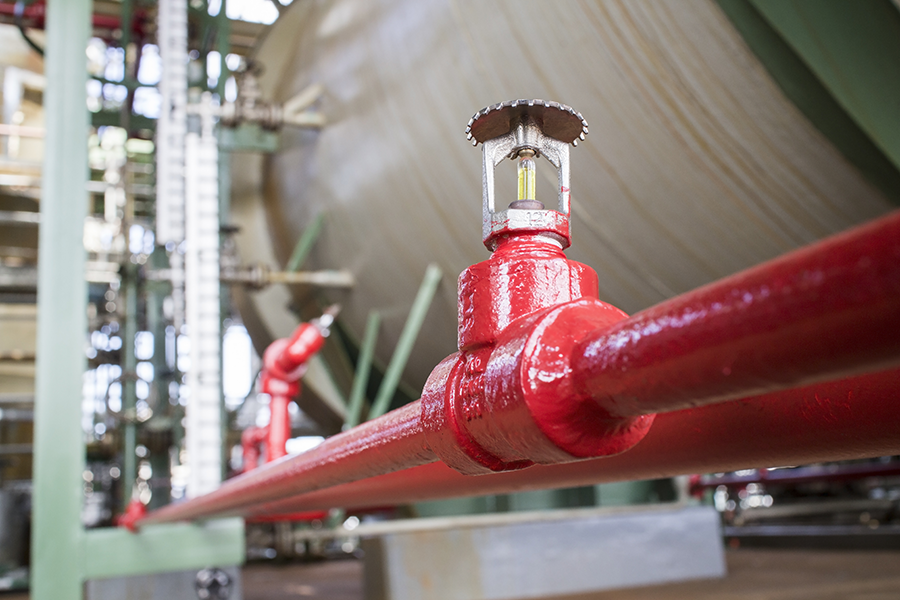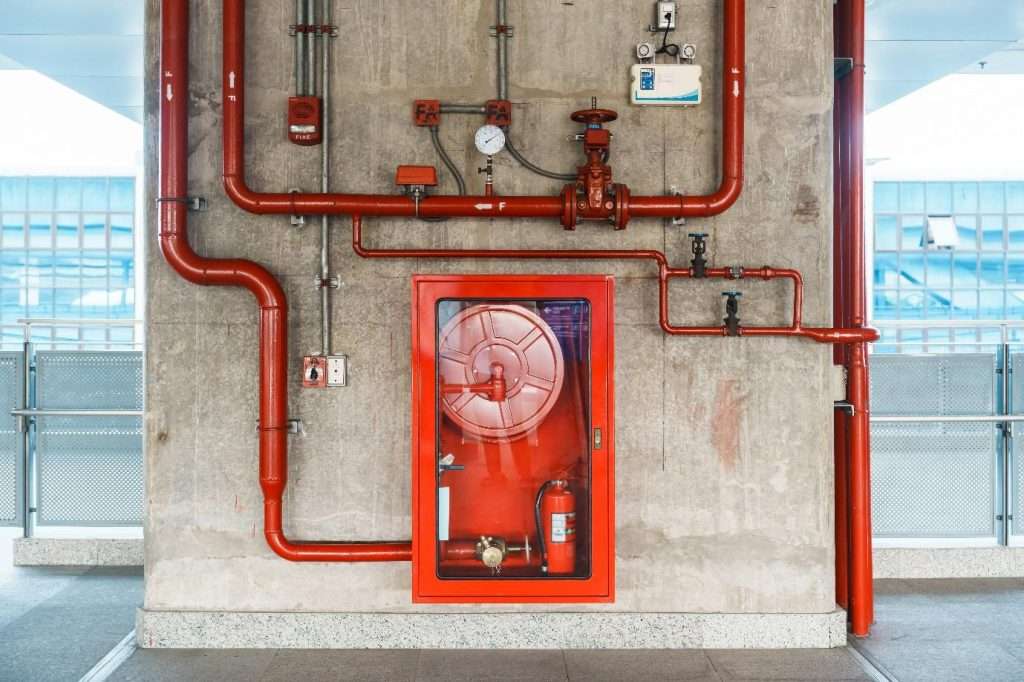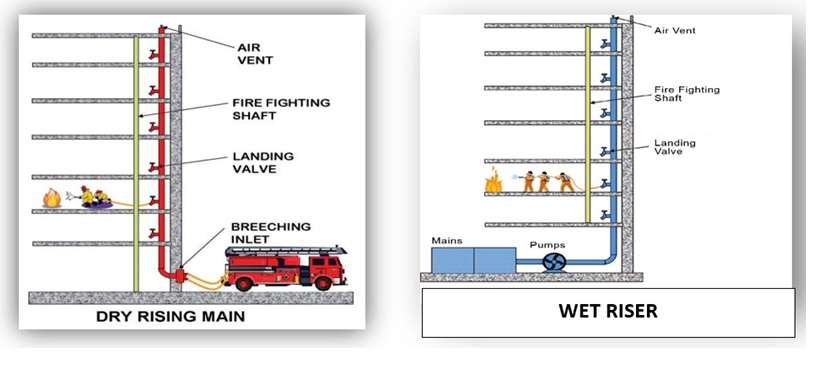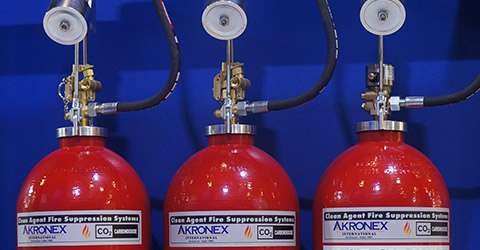
FIRE ALARM PANEL
Simplified Control: A fire alarm panel allows for centralized control and monitoring of the entire fire alarm system, making it easier to manage and respond to emergencies.
Real-Time Alerts: It provides real-time information about the location and status of the fire, enabling faster and more accurate responses.
Early Detection: Fire alarm panels are designed to detect fire hazards early, which can help prevent the spread of fire and reduce potential damage.
Automated Alerts: They can automatically alert occupants, emergency services, and monitoring centers, ensuring a swift response.

SPRINKLER SYSTEM
Immediate Response: Sprinkler systems activate automatically in the event of a fire, suppressing flames quickly and reducing the spread of fire.
Localized Activation: Only the sprinkler heads directly above the fire activate, minimizing water damage to unaffected areas.
Life-Saving Potential: By controlling or extinguishing fires quickly, sprinkler systems significantly increase the chances of survival for building occupants.
Protection of Property: They help limit fire damage to the building and its contents, often reducing the cost of repairs and loss of assets.
24/7 Operation: Sprinkler systems are always on guard, providing continuous fire protection whether the building is occupied or not.
Low Maintenance: These systems are generally low-maintenance, requiring only periodic inspections and testing to ensure they remain functional.

HOSE REEL SYSTEM
Quick Access: Hose reel systems provide immediate access to a water supply, allowing building occupants or trained personnel to tackle small fires before they escalate.
Continuous Water Flow: Once activated, the hose reel delivers a continuous and controlled flow of water, helping to suppress the fire until professional firefighters arrive.
Simple Operation: Hose reels are designed for ease of use, with a straightforward mechanism that allows for quick deployment even by untrained individuals.
Maneuverability: The hose can be unwound easily and directed to the fire source, allowing for effective firefighting even in hard-to-reach areas.
Targeted Application: The hose reel allows for precise targeting of the fire, helping to extinguish flames and prevent the spread of fire to other parts of the building.
Immediate Response: Being an on-site firefighting tool, it enables a faster response than waiting for external firefighting services, which is crucial in the early stages of a fire.

CO2 SUPPRESSION SYSTEM
Rapid Response: CO₂ suppression systems release carbon dioxide gas quickly to displace oxygen in the protected area, effectively smothering the fire and preventing it from reigniting.
Total Flooding and Local Application: These systems can be designed for total flooding of a room or space or for local application directly on specific equipment or hazards, ensuring flexibility in fire protection.
No Residue: Unlike water-based or foam systems, CO₂ suppression leaves no residue, making it ideal for protecting sensitive equipment, electronics, and valuable assets.
Minimal Cleanup: After activation, there’s no need for extensive cleanup, allowing for quicker recovery and less downtime.
Non-Conductive: CO₂ is non-conductive, making it safe for use in areas with live electrical equipment, such as data centers, server rooms, and industrial control rooms.
Effective on Class B and C Fires: CO₂ is particularly effective on Class B (flammable liquids) and Class C (electrical) fires, offering targeted protection for specific fire hazards.

WET AND DRY RISING SYSTEM
Wet Rising System: Best for buildings where immediate water availability is critical, such as high-rises, due to its constant water pressure.
Dry Rising System: Ideal for buildings in cold climates or where cost-effective installation is necessary, with the system only pressurized during firefighting operations.

CHEMICAL FIRE SUPPRESSION SYSTEM
Immediate Activation: Fire suppression systems are designed to detect and respond to fires quickly, often within seconds, helping to control or extinguish fires before they spread.
Automatic Operation: Most systems are automated, meaning they activate without the need for human intervention, which is crucial in situations where occupants may be unaware of the fire or unable to respond.
Various Types Available: Fire suppression systems come in many forms, including gas-based systems (like CO₂, FM-200, or Novec 1230), foam systems, dry chemical systems, and water mist systems, allowing for customization based on the specific needs of the environment.
Wide Range of Applications: They can be used in diverse settings such as data centers, commercial kitchens, industrial facilities, museums, and more.
For more information about our services, please send us your enquiry to WhatsApp or you can email us at [email protected] or send us your enquiry from our website.






